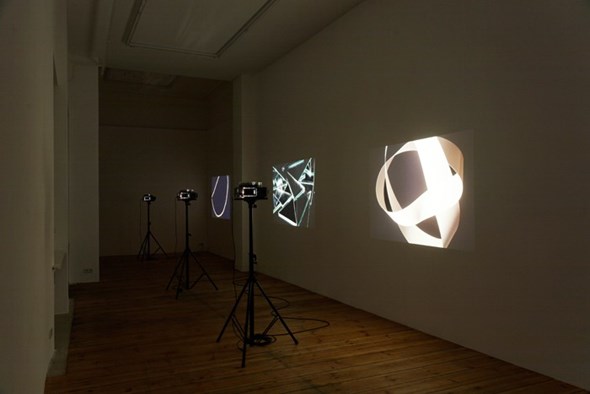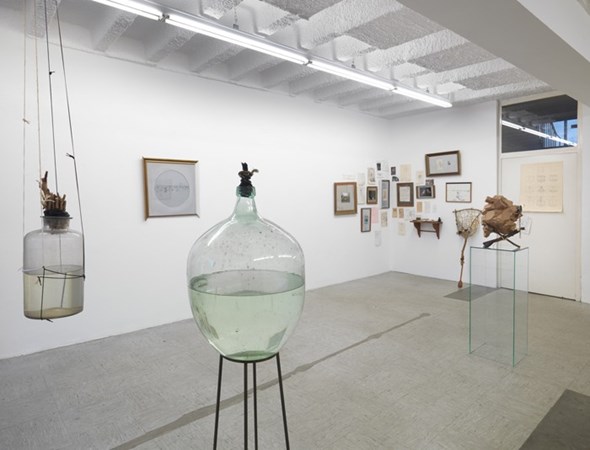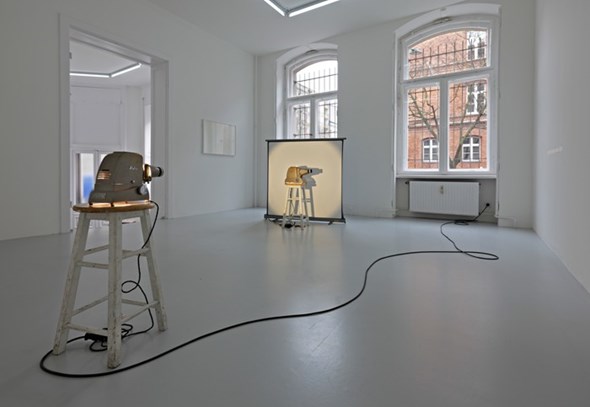Berlin’s new art dealers
Berlin is living through a generational shift. While the protagonists of the 90s achieve the eminence of middle age, young gallery owners set a new course. By ANDREAS SCHLAEGEL
›Crazy Sexyland‹ – that was the wording on the posters that used to advertise the Berlin Erotic Fair. An apparently rather bored blonde woman, with a remarkably listless gaze, looked out from the photograph, which had probably been taken in late 1980s. The fact that this poster has completely disappeared from Berlin shows that the city is getting long in the tooth. However, it is not the women who look old in this city of art. The predominantly male squad of artists and gallery owners from the 1990s is growing honourably grey, and fielded a team of proven and experienced artists at the Gallery Weekend, such as Sean Snyder, Carsten Höller, Simon Starling or Hanne Darboven. They still do their thing very well, but the really fresh impulses are increasingly coming from a new generation of largely young gallery owners.
As different as they are, one does notice a couple of similarities: they are willing to take risks, both concerning young artists, who may succeed with awkward conceptual works, and in relation to the spaces they use, which may lie beyond the well-trodden paths. Something resembling a scene has developed around the galleries of Giti Nourbakhsch and Isabella Bortolozzi, and – although it does keep a respectful distance to the established artists in the Linienstrasse or the Zimmerstrasse – it has entered the market with a self-confidence that disregards the effects of the economic crisis.
In recent years, the galleries Sassa Trülzsch, Sommer & Kohl, Cinzia Friedlaender and Tanya Leighton have settled in the area between Kurfürstenstrasse and Potsdamerstrasse, in what used to be West Berlin. Many of the people involved have experience in managing larger galleries. However, Tanya Leighton is slightly different, due to her background as a curator, which includes work at the ICA in Philadelphia and the Whitney Museum in New York. Her exhibition of Pavel Büchler was one of the most convincing shows of the year so far. In a drily ironic film installation entitled »L’imitation«, he allowed obsolete technologies to evolve their narrative potential anew, with rotating film and sound tapes, humming slide projectors on stools, rectified by empty cigarette packets and their shadows. The current exhibition is devoted to the young Swiss draughtsman Aurélien Gamboni, whose first solo exhibition presents an installation consisting of overlayered drawings, which include references to such diverse authors as Stephen King and Marx.
Just around the corner lies the gallery run by Cinzia Friedlaender, who attracted attention with an idiosyncratic series of exhibitions involving protagonists from the Hamburg School, such as Justus Köhncke, Dirk von Lowtzow und Jutta Pohlmann. That gave her the reputation of being a gallery specialising in a kind of ›celeb‹ art. She has proved this to be untrue by staging precise shows of the fragile, razor paintings of Matthias Schaufler, or the current, magical slide installations by the Korean Sunah Choi.
Salome Sommer and Patricia Kohl have been around only a few months longer. At a former bedspring factory, they present equally playful positions, such as the narrative assemblages by Kara Uzelman, but also Knut Henriksen’s interventionist sculptures, or Riccardo Previdi’s formally severe installations that are oriented to minimalist positions.
Sassa Trülzsch has now been a fully-fledged participant at the Gallery Weekend for three years running. She has plans for the big fairs in summer and autumn, and it is tempting to nominate her as the grande dame of this scene. She acquired her reputation with concentrated arrangements of little cabinet pieces by very young artists, such as Fiete Stolte, but also by presenting more established positions, such as those of Dieter Detzner or Aura Rosenberg. At the opening of her new, freshly renovated rooms on the evening before the Gallery Weekend, she let the Munich artist Alexander Laner shoot neon-coloured clay pigeons on the stairs. The splinters almost reached the atrium, which was hung with the discreet overpaintings of magazine pictures by the young Dane Sofie Bird Møller, celebrating facets of the beauty of destruction.
A further participant at the Gallery Weekend was Micky Schubert, whose Kreuzberg rooms were showing paintings by the Glaswegian Alan Michael, based on photographs of Dutch flags. She demonstrates her independence not only in her choice of location, but also in her choice of artists, such as the young Pole Maximilian Zentz Zlomovitz, or Thea Djordjadze, whose formalistic and subversive sculptures attracted a great deal of attention at the 5th Berlin Biennale.
Similarly Sabine Schmidt, whose PSM gallery is located in a former garage in Strassburger Strasse. It opened hardly a year ago, with a furious sound installation by the Japanese sound artist Ujino Muneteru, which was brought to an end by an overpowering police presence on the grounds that it was disturbing the peace. She has impressively demonstrated her own position in the current debate about referentiality and post-modernism. For example, she has shown the works of the Norwegian Øystein Aasan, who is trained in conceptual artistic strategies (he, like the gallery owner, was a former member of the Art Critics Orchestra – as was, in fact, the present author – that much transparency is necessary). PSM has also exhibited the quirkily humorous sculptures alluding to modern architecture by the Dane Sophie Erlund. Parallel to the Gallery Weekend, a post-apocalyptic scenario by the Texan Daniel Jackson was to be seen, with apparently abstract paintings based on historical camouflage patterns, real Second World War anti-tank barriers and a self-presentation of the artist as a masked anarcho-bum. At the very latest by the next exhibition, curated by the New York critic and curator Bob Nickas, and featuring many big names, PSM will have grown beyond its present status of an insider tip.
If one ventures further into the field, which has barely been touched upon with the new galleries described here, and includes galleries run by Sandra Bürgel, Lena Brüning, Isabella Bortolozzi and Jennifer Chert, without even mentioning the planned new openings, then one is strengthened in one’s suspicion that a change of generation is coming. Perhaps more than ever, Berlin’s current art scene really is a ›Crazy Sexyland‹.
Translated by Peter Waugh
ANDREAS SCHLAEGEL is a Berlin based artist, critic and plays the drums in the Art Critics Orchestra.




